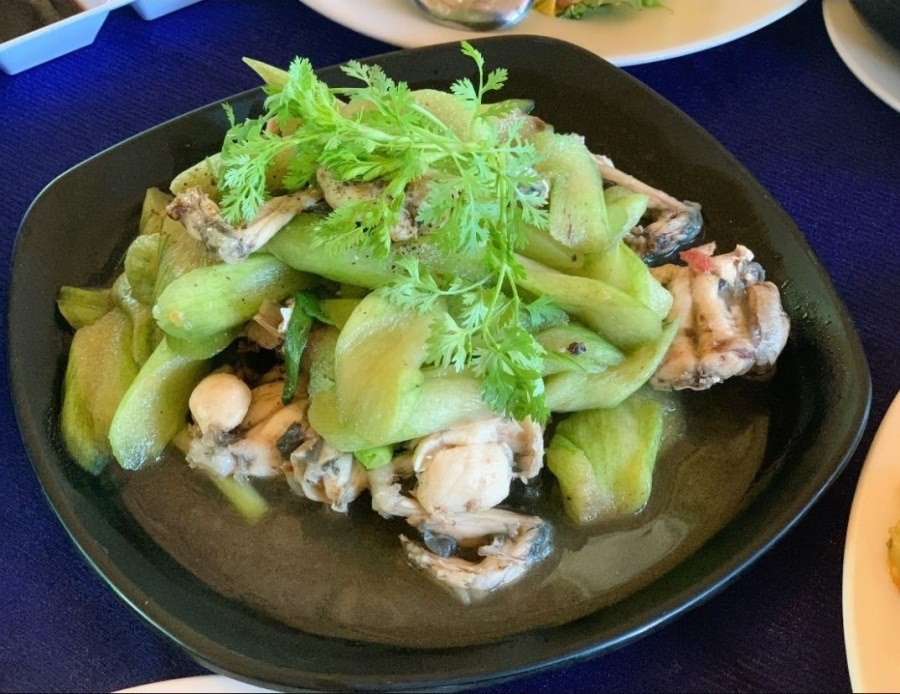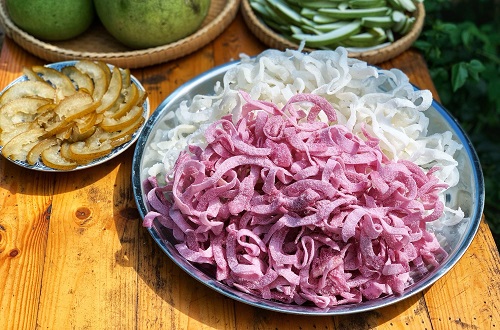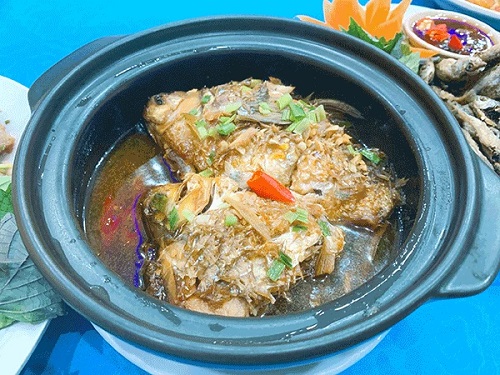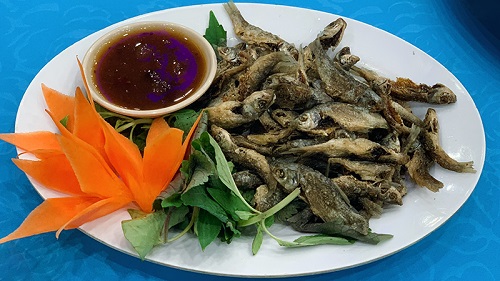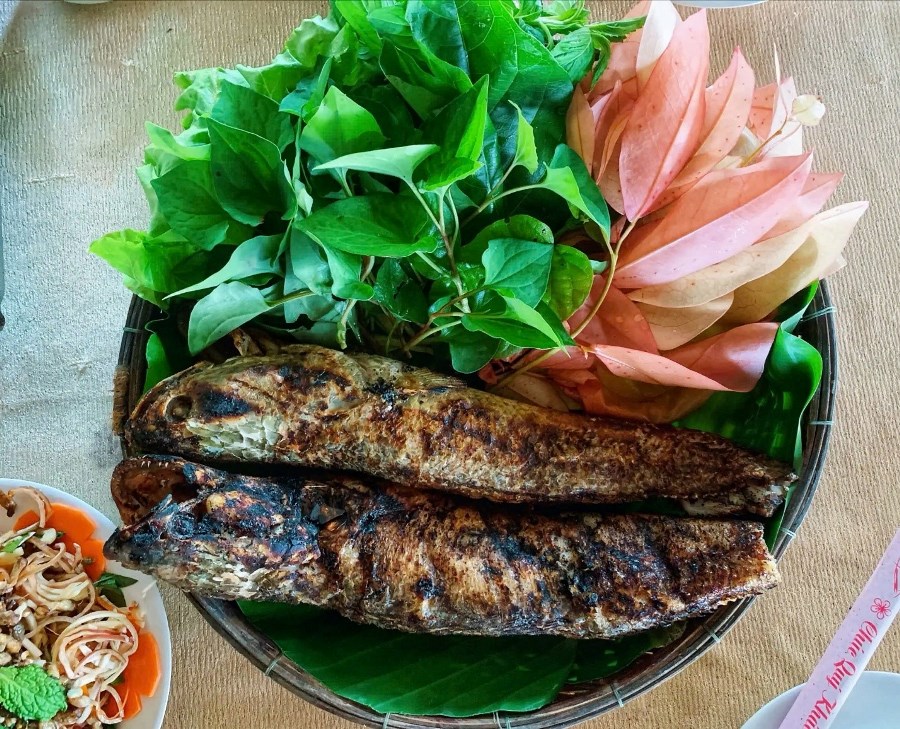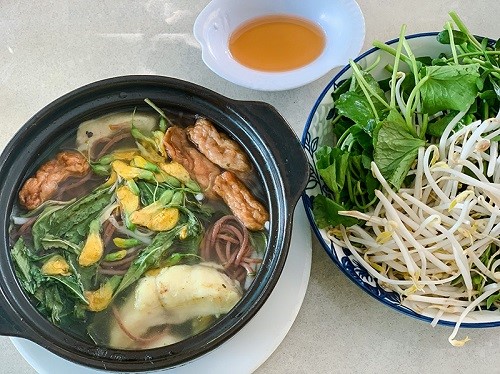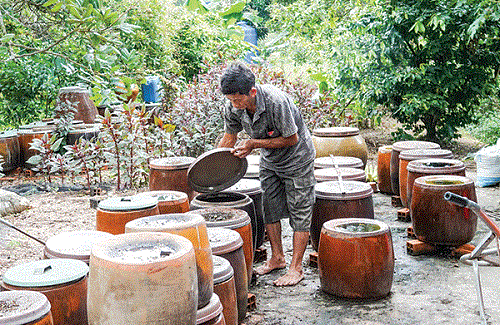
There is no documented evidence pinpointing the exact period when the first batch of fish sauce was produced in Vietnam. However, historical records mention fish sauce quite extensively.
In the "Complete Annals of Dai Viet" during the Le dynasty (reign of Emperor Dai Hanh), there is a passage that reads: "In the fourth year of the Hung Thong era (997), during the summer, in April, the King is crowned by Song Dynasty as Nam Binh King and sent an envoy to the Song Dynasty to offer tribute. The Song Dynasty issued a letter of commendation. Previously, Song Dynasty envoys often used the reputation of asking for fish sauce as tribute so that they could demand contributions. Upon hearing this, Emperor Song Renzong who was aware of the matter, only dispatched border officials to receive the decree and did not send envoys anymore." A deeper analysis of the content of this historical passage reveals several intriguing points. The Chinese people do not have a tradition of consuming fish sauce; they use soy sauce. So why did they demand Vietnamese fish sauce? Or in the early Le period, was Vietnamese fish sauce so rare and precious that it had to be used to push other to the limit? At the moment, looking at the timeline, this is rare and somewhat significant historical documentation regarding this beloved "national sauce" Of course, fish sauce existed long before 997, but from this point onwards, it can be clearly traced in Vietnamese history(1).
Phan Huy Chu recorded in the “Lich trieu hien chuong loai chi” (Rules of the dynasties were written according to classification) in the section on national products, that during the reign of Emperor Ly Thai To, in the fifth year of Thuan Thien (1013), fish sauce was one of the six local products subject to taxation. By the time of Emperor Le, in the Canh Hung era, the fourth year (1743), there were clear regulations on the quantity of fish sauce that each maker had to contribute. In Thuan Quang region, those with the means to catch fish had to contribute three clay pots annually, while wage laborers contributed one clay pot each year. This tax was known as the "thue biet nap" (Whatever products you make, you pay taxes with that product) replacing the personal tax. In 1769, the state collected more than 3,000 clay pots in fish sauce taxes, with each clay pot priced at 1 tiền(2).
Thus, fish sauce has been a presence in Vietnamese historical records for a long time and has become a distinctive dipping sauce for the Vietnamese people. Fish sauce is used to enhance the flavor during meals, as a seasoning for dishes, and as a spice for marinating, making food more delicious, as analyzed below: "Fish sauce is the product of the natural breakdown of proteins found in various types of fish. The best fish sauce is made from Anchovy, the first-grade sauce has a protein content of up to 60 degrees, also known as “nuoc mam nhi', in addition they can add water to get the 'second grade sauce” and 'third grade sauce'. Research has shown that fish sauce has a very high nutritional content, containing a complete set of amino acids, especially essential amino acids. Fish sauce also contains significant energy compounds along with trace elements. Fish sauce also contains vitamins B1, B2, B12, and PP..." (3). Furthermore, through the image of the fish sauce bowl, we can also see the sense of community and etiquette in the dining process. The sense of community is evident in family meals, where everyone shares the same dipping bowl. The etiquette aspect is seen in how one dips, ensuring that no drops of fish sauce spill onto the table.
In addition, the image of fish sauce has long been incorporated into the treasury of Vietnamese folk songs and proverbs. "Fish sauce has been present in Vietnamese land since ancient times, accompanying the voice of the people since the founding of the nation, deeply ingrained in the minds of the Vietnamese people in all social activities, religious emotions, and customs. A few examples include: “Nuoc mam xem mang, thanh hoang xem tan quat” (Through the appearance, we can know the content inside), “Trai tơ vo phai na dong / Nuoc mam thoi cham long lon thiu” (The story of a virgin marrying a widow, like stale pig intestines dipping smell fish sauce), “Dua La, hung Lang, nem Bang, tuong Ban / Nuoc mam Van Van, ca ro Dam Set” (Express your gourmet taste in cuisine), “Go Boi co nuoc mam ngon / Ai đi cung nho ca tom Go Boi” (Go Boi has fragrant fish sauce. Everyone who goes will remember Go Boi fish and shrimp), “Chum trang dung nuoc mam vang / Den khi lo lang lai mo ra an” (Funny question about the egg) (4)...
In the southern part of Vietnam, the image of fish sauce serves as a means for young men and women, couples in love, to express their thoughts, emotions, and affections in a playful, humorous, yet profound and endearing manner. For instance, the image of fish sauce is used by a young man to initiate a meeting with his beloved: “Nuoc mam chanh danh an banh hoi/Qua thuong nang theo doi may nam (Lime fish sauce for dipping rice cakes / Through longing, I've been watching you for years), When the young man uses the imagery of fish sauce, the young lady also employs it to politely decline his advances: “Nuoc mam ngon Thuong Thu / Tha mieng du du no noi lo do / Phan em con dai con kho / Lam dau chua dang, cay nho moi anh” (Thuong Thu’s good fish sauce, it's true / Drop a papaya piece in, it floats on the surface / I'm still naive and a bit clueless / Not yet a bride, I depend on you), Upon hearing this, the young man continues his expression: “Nuoc mam ngon dom sau day hu / Tha mieng du du xuong tan day binh / Mu u nhuom tham bong huynh / Bao nhieu gai dep anh khong nhin / Da anh chi de thuong minh em thoi (Delicious fish sauce, look deep at the bottom of the jar / Drop a piece of papaya all the way to the bottom / The tamanu dyed the night cactus / So many beautiful girls, but I only have eyes for you!). At this point, the young lady loses her hesitation: “Nuoc mam lang lai chui hoai hong het / Troi hoi troi sao chang bot nho thuong / Soi to hong em lo van vuong / Gap anh mot buoi nho thuong tram van ngan ngay” (Glossy fish sauce, no matter how much I wash, it won't disappear / Oh heavens, why can't I forget you? / The pink silk thread has tangled up / Meeting you for one day is worth a thousand years of missing) ...
In summary, fish sauce is one of the distinctive features of Vietnamese cuisine, with a long history of formation and development, and it has become a part of Vietnamese culture. Through the fish sauce bowl at every meal, Vietnamese people also teach their children about dining etiquette and table manners. Moreover, fish sauce is used to convey the love between couples in a playful and intimate manner...
-----------------
(1) Pham Hoang Quan (2018), "Nhung manh sur oi" (The Disconnected Fragments of History) published by Ho Chi Minh city General Publishing House, page 237.
(2) Pham Hoang Quan (2018), Ibid, page 237.
(3) Nguyen Thiị Dieu Thao (2015), “Am thuc Viet Nam va the gioi” (Vietnamese Cuisine and the World), Women Publishing House, page 29-30.
(4) Nguyen Tien Huu (2020), “Nuoc mam nguon goc và con duong thien di” (The Origin of Fish Sauce and Its Heavenly Path), Xưa và Nay Magazine, Issue 518, April, Page 45.
Source: Can Tho News - Translated by Hoang Dat







